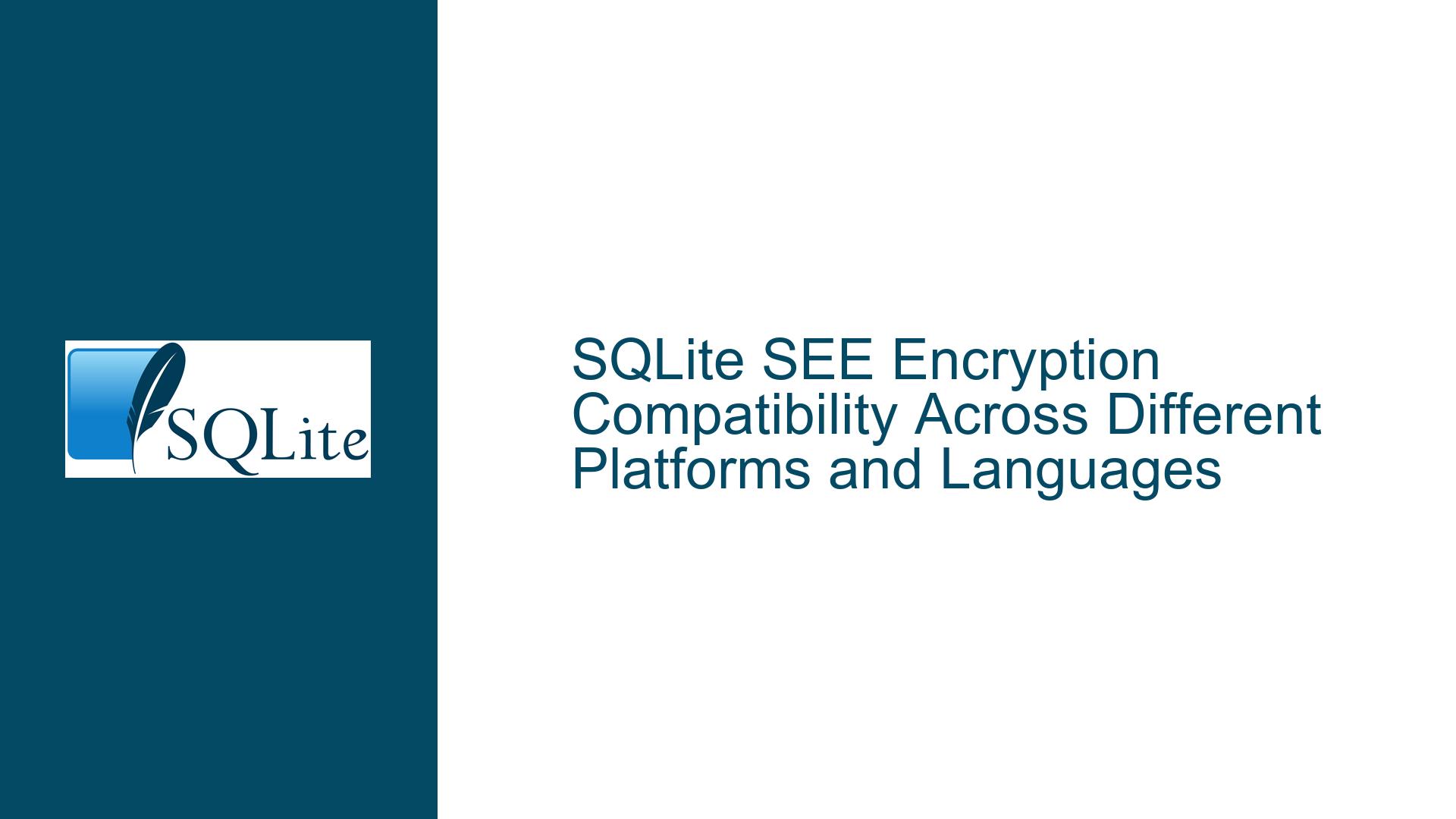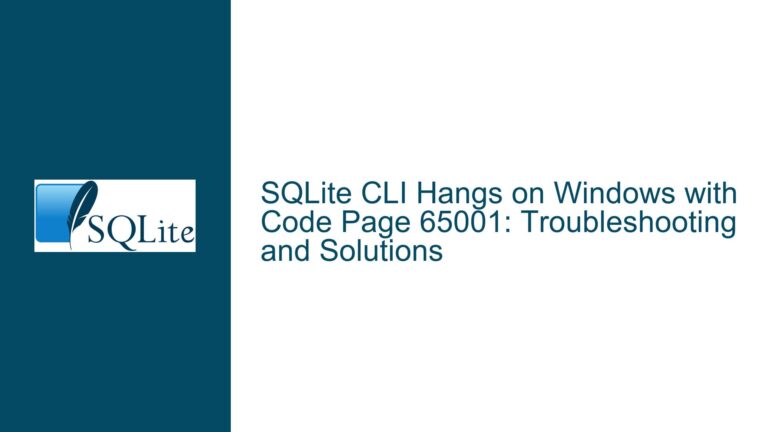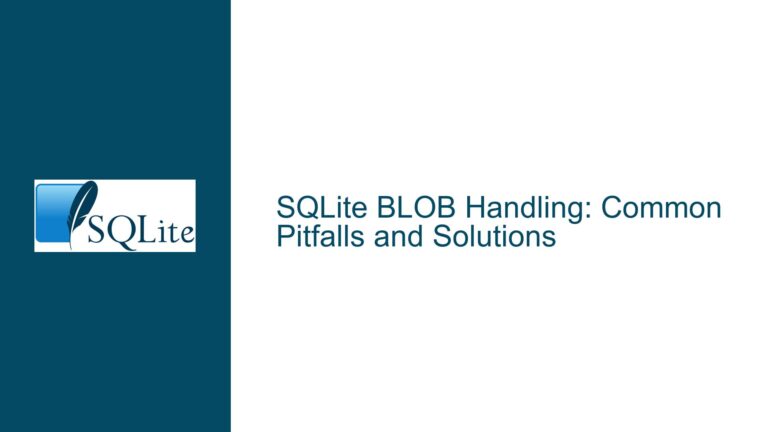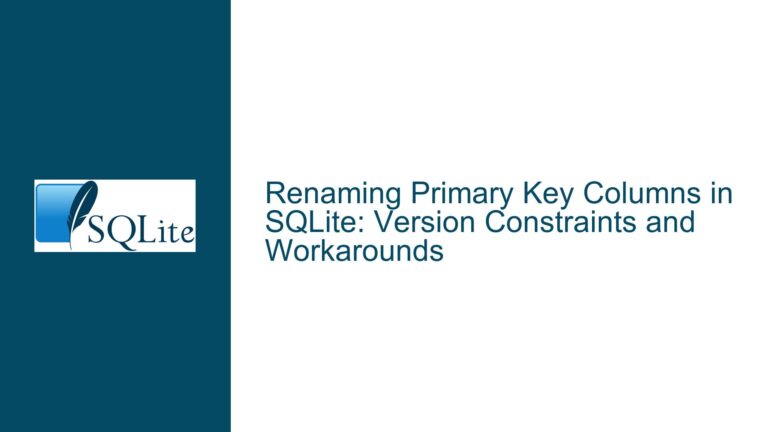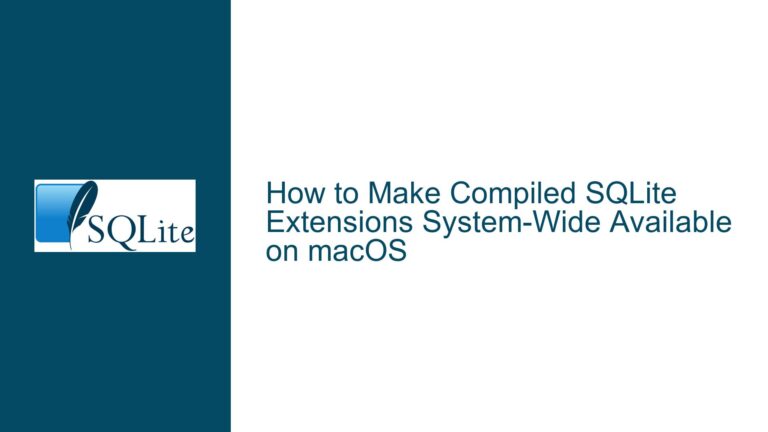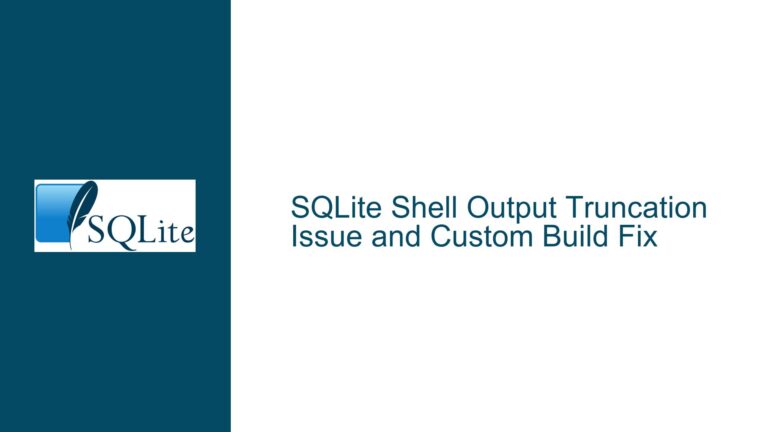SQLite SEE Encryption Compatibility Across Different Platforms and Languages
Understanding SQLite SEE Encryption and Cross-Platform Compatibility
SQLite Encryption Extension (SEE) is a powerful tool that allows developers to encrypt SQLite database files, ensuring data security. However, when working with encrypted databases across different platforms and programming languages, compatibility issues can arise. The core issue revolves around whether an SQLite database encrypted using SEE in one environment (e.g., a .NET Core project) can be decrypted and used in another environment (e.g., a legacy C++ or MFC application). This requires a deep understanding of how SEE works, the encryption variants it supports, and the steps necessary to ensure seamless compatibility.
When encrypting a database using SEE in a .NET Core project, the encryption process is typically configured using an SDS-SEE.exml file. This file contains the encryption settings, including the encryption variant and key management details. The encrypted database file is then created and can be used within the .NET Core environment. However, when attempting to use this encrypted database in a legacy C++ or MFC application, the question arises: Is the same SEE implementation available in the legacy environment, and will it be able to decrypt the database?
The answer lies in the consistency of the encryption variant used across both environments. If both the .NET Core project and the legacy C++/MFC application use the same SEE encryption variant, the encrypted database should be compatible. However, if the encryption variants differ, decryption will fail, leading to data inaccessibility. This underscores the importance of ensuring that the same SEE implementation and encryption settings are used across all platforms and languages where the encrypted database will be accessed.
Potential Causes of SQLite SEE Encryption Compatibility Issues
Several factors can contribute to compatibility issues when using SQLite SEE encryption across different platforms and languages. One of the primary causes is the use of different encryption variants. SQLite SEE supports multiple encryption variants, each with its own encryption algorithm and key management approach. If the .NET Core project uses one encryption variant and the legacy C++/MFC application uses another, the encrypted database will not be decryptable in the legacy environment.
Another potential cause is the absence of the SEE drop-in replacement for the SQLite amalgamation in the legacy environment. The SEE drop-in replacement is a modified version of the SQLite amalgamation that includes the SEE encryption functionality. If the legacy C++/MFC application does not have access to this drop-in replacement, it will not be able to decrypt the database, even if the correct encryption variant is used. This highlights the need to ensure that the SEE drop-in replacement is properly integrated into the legacy environment.
Key management discrepancies can also lead to compatibility issues. The encryption key used to encrypt the database in the .NET Core project must be available and correctly configured in the legacy C++/MFC application. If the key is not correctly passed or configured in the legacy environment, decryption will fail. This emphasizes the importance of consistent key management practices across all platforms and languages.
Finally, version mismatches between the SQLite SEE implementations in different environments can cause compatibility issues. If the .NET Core project uses a newer version of SEE than the legacy C++/MFC application, there may be differences in the encryption implementation that prevent successful decryption. Ensuring that both environments use the same version of SEE is crucial for maintaining compatibility.
Steps to Ensure SQLite SEE Encryption Compatibility Across Platforms and Languages
To ensure that an SQLite database encrypted using SEE in a .NET Core project can be decrypted and used in a legacy C++ or MFC application, follow these detailed troubleshooting steps and solutions:
1. Verify Encryption Variant Consistency:
The first step is to ensure that the same encryption variant is used in both the .NET Core project and the legacy C++/MFC application. Review the SDS-SEE.exml file used in the .NET Core project to identify the encryption variant. Then, verify that the legacy C++/MFC application is configured to use the same encryption variant. If the encryption variants differ, update the legacy application’s configuration to match the .NET Core project’s settings.
2. Integrate the SEE Drop-in Replacement:
Ensure that the SEE drop-in replacement for the SQLite amalgamation is correctly integrated into the legacy C++/MFC application. This involves replacing the standard SQLite amalgamation with the SEE-enabled version and recompiling the application. Verify that the SEE functionality is correctly initialized and configured in the legacy environment. If the SEE drop-in replacement is not available, obtain it from the SQLite SEE provider and follow the integration instructions provided.
3. Consistent Key Management:
Implement consistent key management practices across both environments. Ensure that the encryption key used in the .NET Core project is correctly passed and configured in the legacy C++/MFC application. This may involve securely storing the key in a configuration file, environment variable, or key management system that both environments can access. Verify that the key is correctly retrieved and used during the decryption process in the legacy application.
4. Match SQLite SEE Versions:
Check the version of SQLite SEE used in the .NET Core project and ensure that the same version is used in the legacy C++/MFC application. If the versions differ, update the legacy application to use the same version of SEE as the .NET Core project. This may involve downloading the appropriate SEE version from the SQLite SEE provider and updating the application’s dependencies.
5. Test Decryption in the Legacy Environment:
After ensuring that the encryption variant, SEE drop-in replacement, key management, and SEE versions are consistent, test the decryption process in the legacy C++/MFC application. Attempt to open the encrypted database and verify that the data is accessible. If decryption fails, review the configuration settings and error messages to identify and resolve any issues.
6. Debugging and Error Handling:
Implement robust error handling and debugging mechanisms in both the .NET Core project and the legacy C++/MFC application. This includes logging detailed error messages and exceptions during the encryption and decryption processes. Use these logs to diagnose and resolve any compatibility issues that arise. If necessary, consult the SQLite SEE documentation or seek assistance from the SQLite SEE provider.
7. Documentation and Best Practices:
Document the encryption and decryption processes, including the encryption variant, key management approach, and SEE version used in both environments. This documentation will serve as a reference for future maintenance and troubleshooting. Additionally, follow best practices for SQLite SEE encryption, such as regularly updating to the latest SEE version and securely managing encryption keys.
By following these steps, you can ensure that an SQLite database encrypted using SEE in a .NET Core project is compatible with a legacy C++ or MFC application. This approach minimizes the risk of compatibility issues and ensures seamless data access across different platforms and languages.
